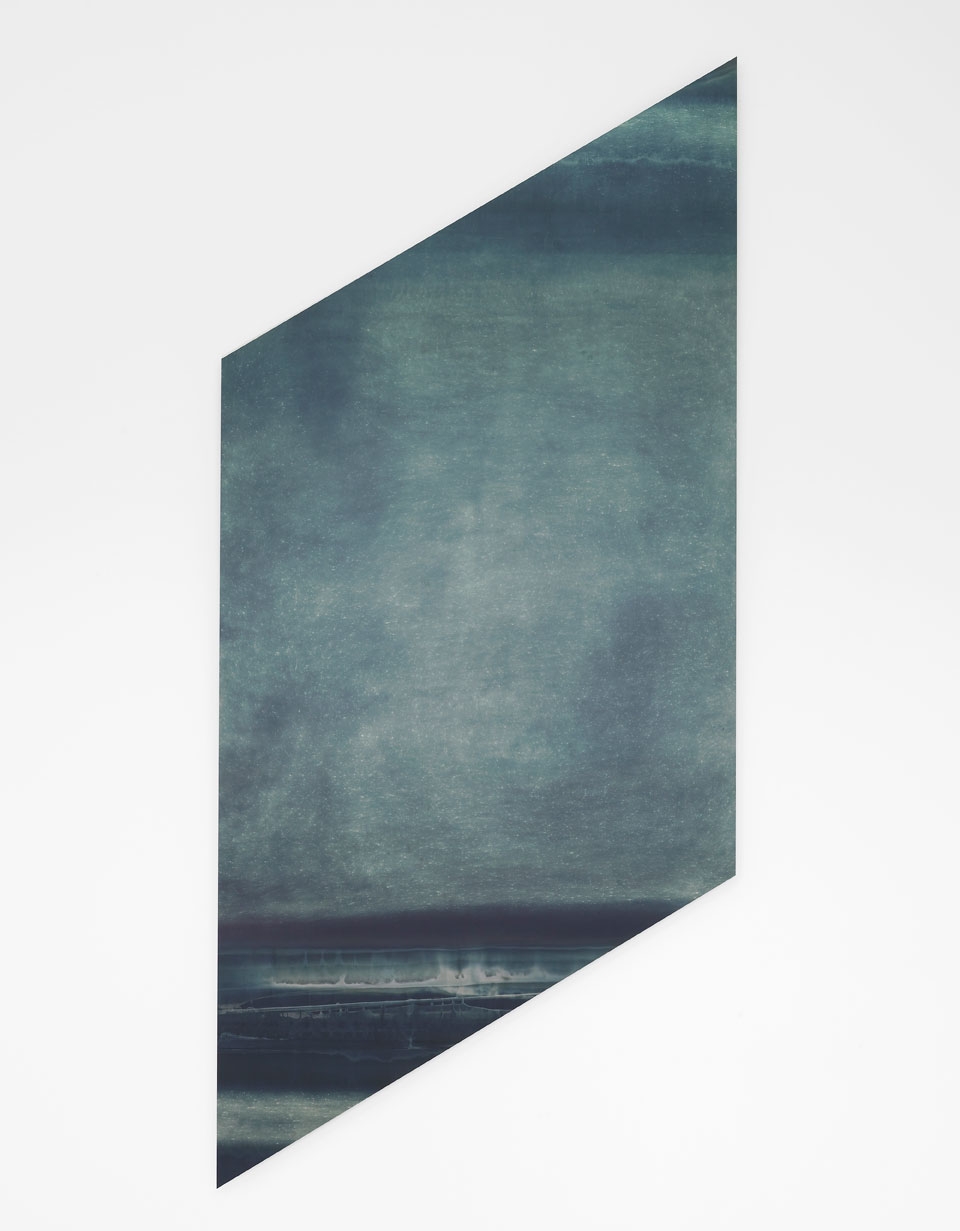On seeing one of the first photographs, in 1839, the painter Paul Delaroche is supposed to have exclaimed, ‘From today, painting is dead.’ Since the conclusive arrival of digital-image culture during the 1990s, with Photoshopping and CGI moviemaking, much the same thing could and has been said of analogue photography, with all its special papers, messy chemicals and darkrooms. Liz Deschenes doesn’t mind, though. Just as painting’s redundancy as realist art didn’t kill it, but led painters into further investigation of its abstract and material dimensions, Deschenes, who has been working since the 1990s, is one of a generation of artists to regularly delve into the fundamental properties of light-sensitive paper and its exposure – Wolfgang Tillmans, Walead Beshty, Gerard Byrne, Broomberg & Chanarin or Michael Part come to mind – without worrying too much about lenses, or the making of actual images.
Deschenes’s work is something of an extreme in this evolving field. Large sheets of silver-toned gelatin print, exposed at night, sometimes outdoors, and still potentially oxidising even when exhibited, Deschenes’s photograms are darkly reflective surfaces, metallic in sheen, which ditch bright colour for a palette of decaying metal – tarnished silvers, lead and pewter.
It makes for elusive objects, whose gloomy depths draw you closer, or alternatively reflect you back at yourself, keeping you dangling in the in-between. Because for all that they wear their materiality on their sleeve, Deschenes’s works are still playfully haunted by images. Bracket 1, 2, 3 and 4 (all works 2013) are four parallelogram-shaped prints, mounted on aluminium, ranged across one wall. Whatever strange business of exposure, dribbling and drying has taken place, what’s left are dimly modulated swirls and pools of deep black-blues, faded verdigris and contrasting whitened areas, which first seem to resemble the grain of worn marble, but eventually flip the eye into the extreme depth of twilit horizons and vast, distant cloud ranges.
Nevertheless, Deschenes’s shaped prints, like many of her earlier installations, push us eventually back into the space around, gesturing to the surrounding architecture (the parallelograms mimicking the skylight above, or the shifting planes of the gallery’s walls). If there is an image in these photographic surfaces, then Deschenes seems keen to insist that it is the reflected image of the world and us in it that her photograms transiently contain: Bracket 5 presents us with a tarnished, spotted silvery surface affixed inside a wall-mounted display case to form a concave mirror, our reflection warping and flipping as we move, as in a fairground hall of mirrors.
There’s little that’s celebratory or playful in Deschenes’s sombre, reflexive photo-objects, however. Meditative and elegiac, maybe, for the age when we believed in images fixed, forever, in chemical matter, Deschenes’s surfaces are chemical experiments, but there’s too much affect here for it to be mere technical tinkering. There is, of course, something historically regressive to this – back to the time before Daguerre, when chemicals deteriorated and images slipped away. Still, digital images, in their rootless circulation and corruption, are more volatile. By contrast, Deschenes’s works insist, however tentatively, that somewhere, sometime, light and matter did in fact coincide, that reality still leaves a trace behind.
This article was first published in the January & February 2014 issue.
